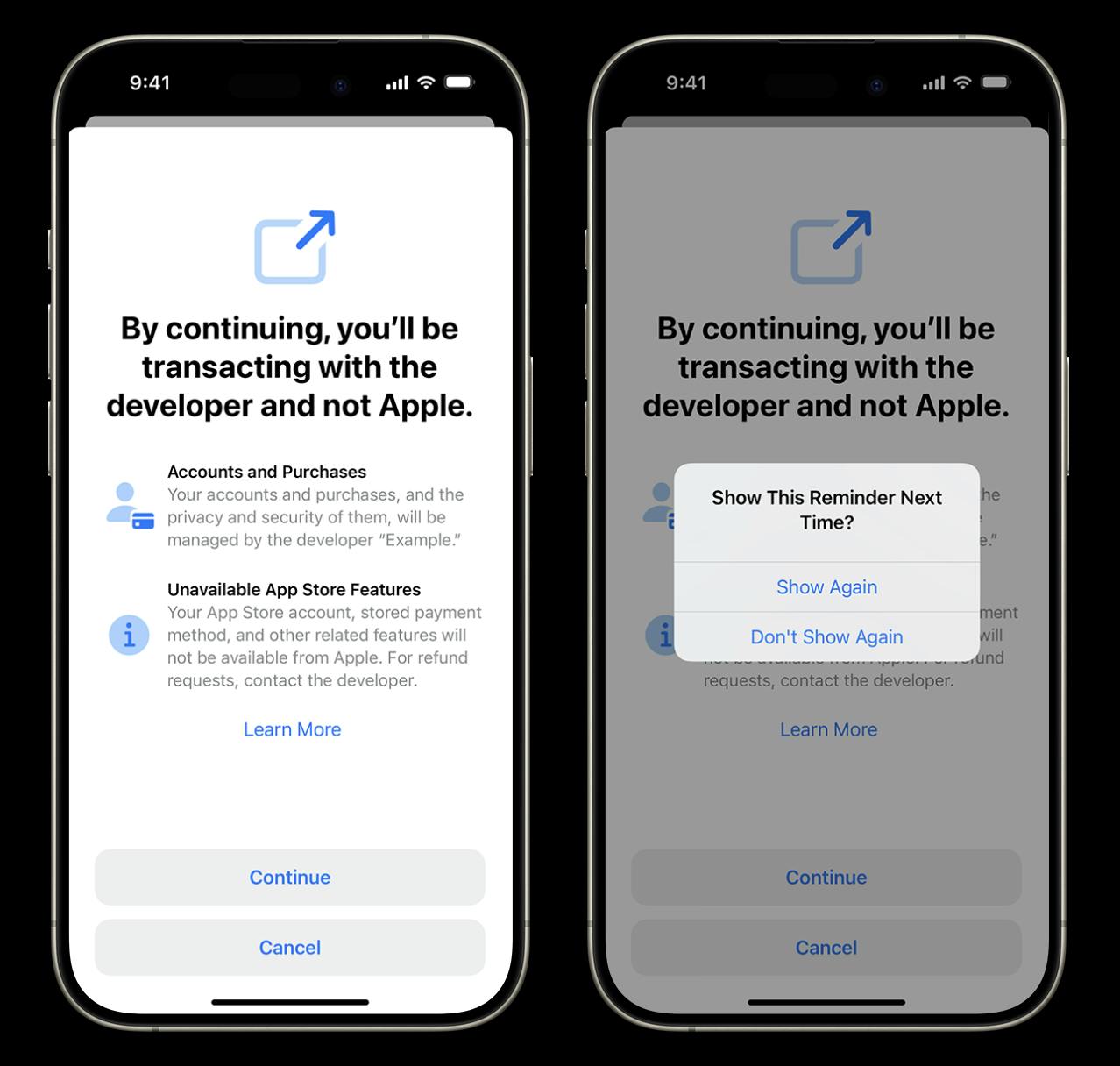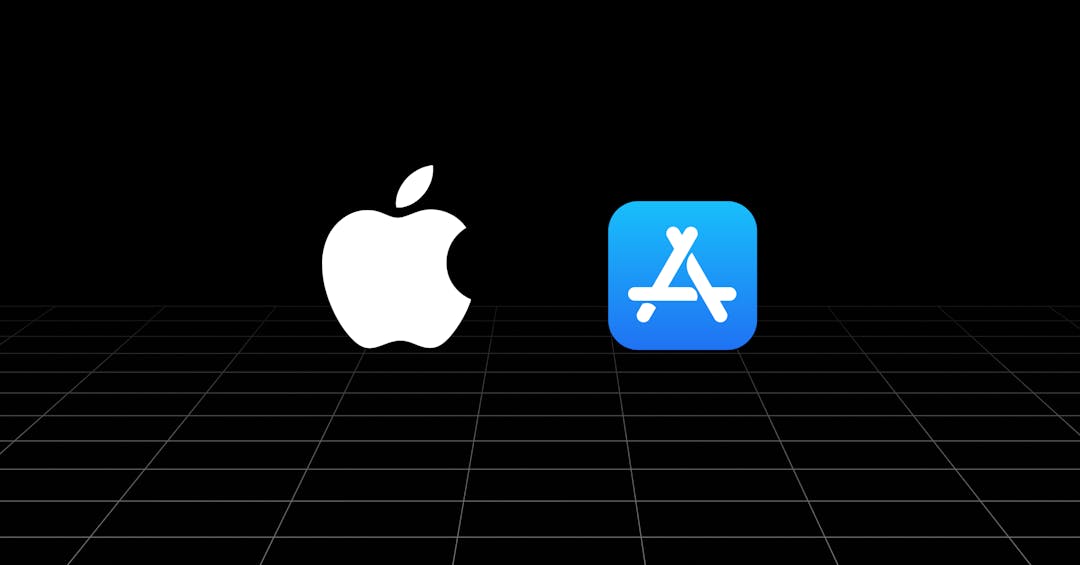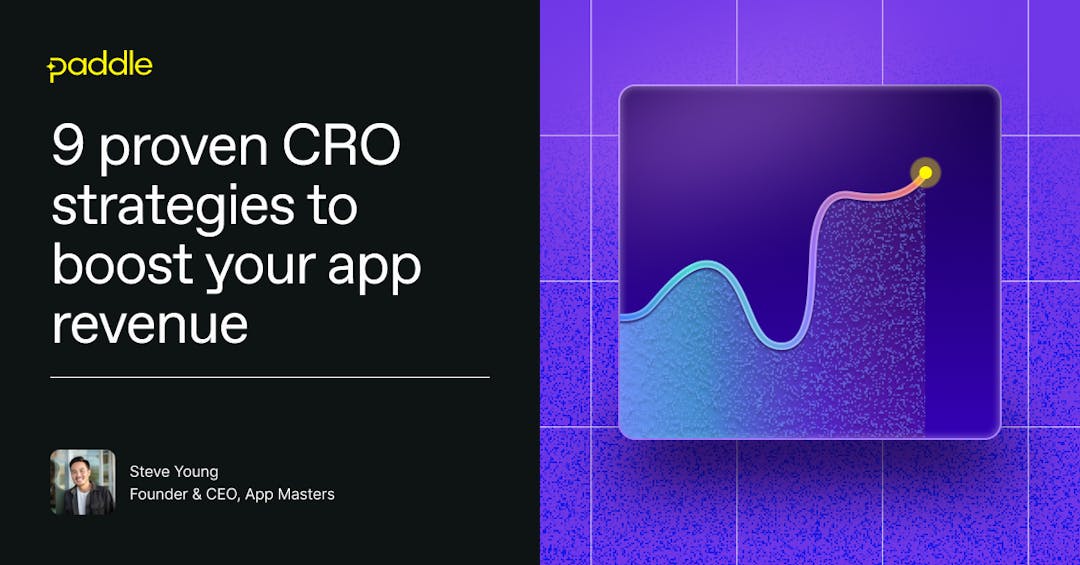Apple has officially revised its EU App Store rules to comply with the Digital Markets Act (DMA), introducing a new tiered fee structure for developers.
The changes deliver a complex blend of percentage-based commissions and reporting obligations. The structure may look more flexible on paper, but most of the choices come with hidden trade-offs and added friction.
Below, I break down what’s changed, what’s stayed the same, and why Web2App continues to be the smartest path forward for most developers.
Apple revises EU App Store rules: TL;DR
- Apple has introduced a new tiered fee structure with two distinct tracks
- These tiers bring with them trade-offs between App Store visibility and lower fees
- These new updates prove again the value of Web2App for EU developers who want App Store visibility without the high fees
What’s changed?
This is a fresh response to the EU’s DMA, a landmark regulation that aims to give developers more control over how they distribute and monetize apps.
In their initial response to the DMA back in 2024, Apple reduced fees, but developers still had to pay 10-17% for all transactions, with additional fees for IAP (3%) and a controversial Core Technology Fee of €0.50 for every install after 1,000,000 installs.
Apple has now shifted to a tiered fee structure, but the new model adds to a mix of percentage-based commissions and ongoing service fees. Developers must now track, report, and reconcile transactions across platforms.
Apple requires detailed monthly reporting for any app using external purchase links, covering everything from refunds and renewals to failed transactions, all of which require meaningful engineering and financial resources.
While the structure may look more flexible on paper, the reality is that most choices offered come with hidden trade-offs and far more complexity.
Below, we break down Apple’s new tiered system.
Tier 1 attributes
- Lower Store Services Fee: 10%
- App does not appear in EU App Store search results
- No ratings or reviews shown to EU users
- No automatic updates — users must manually update your app
- Slower app review timelines (globally)
- Excluded from the Apple Games app and all EU App Store featuring
Our take: Want to use external payments and enjoy lower fees as you would in the US? Unfortunately that would mean sacrificing the App Store as a key distribution channel, turning the App Store into a simple download mechanism.
This tier is only viable if you acquire users outside the App Store entirely (e.g. via Web2App, paid channels, or community-driven growth), an impossible pill to swallow for most app developers.
Tier 2 attributes
- Higher Store Services Fee: 13%
- Full App Store search visibility in the EU
- Ratings and reviews shown normally
- Users receive automatic app updates
- Eligible for App Store featuring and editorial placement
- Appears in the Apple Games app (if applicable)
Our take: This is the default App Store experience that most developers and users are familiar with. You keep all the key distribution tools: visibility in search, ratings and reviews, automatic updates, and the chance to be featured.
The trade-off is cost. If you use external payments, you’ll pay a 13% Store Services Fee (Plus the fees detailed below).
The bigger picture
When using external payments under Apple’s new EU rules, developers will pay a combination of fees.
Here's the breakdown:
Feature | Initial Acquisition Fee (IAF) | Store Services Fee (SSF) | Core Technology Commission (CTC) |
|---|---|---|---|
Developer Cost | 2% | 10% - 13% | 5% |
Notes | Applies to any transaction (or renewal) within 6 months of the user's initial app install | 10% if you're on Tier 1 (low-support tier), 13% if you're on Tier 2 (standard App Store tier) | It’s been simplified to cover all installs, and you keep paying it until 12 months have passed since the user last installed, reinstalled, or updated the app. So if you’re pushing regular updates, you’re essentially resetting the clock and the fees keep applying. That same 12-month window applies to the Store Services Fee (SSF). |
While a 4-6% saving might sound like a win for developers on paper, the reality is more complex.
For Apple’s Small Business Program apps (under $1M revenue)
These developers currently pay 15% to Apple. With external payments, they'd pay around 21% total. While this friction can be minimized, and we still very much encourage experimentation here in the event of further change, that's actually more expensive for developers in the Small Business Program.
For larger apps
Even apps paying Apple's full 30% only save about 4-6% with external payments. But they face:
- Lower conversion rates from payment friction and warning screens
- Complex reporting requirements to Apple
- User experience downgrades from redirects and warnings

Again, we encourage experimentation here, but currently, the savings simply don't justify the friction.
Web2App still the essential motion for app developers in the EU
Until recently, even if a user paid on your website before downloading your app, Apple still charged a €0.50 Core Technology Fee (CTF) for every new install.
That flat tax applied regardless of where the transaction happened, making true Web2App flows harder to justify.
But with Apple’s June 2025 update to its EU App Store model, that fee is now gone.
In its place is a 5% Core Technology Commission (CTC), but, critically, the CTC only applies to transactions that occur after a user installs, reinstalls, or updates your app.
So if a user completes their purchase on your website before downloading the app and you’re not linking out from the app using Apple’s external purchase entitlement, you owe Apple nothing.
You're no longer bound by Apple’s purchase UI, pricing tiers, refund policy, or App Store review cycles and you completely avoid the user friction created by Apple’s mandatory warning pop-ups for in-app external payment links.
Enhanced attribution and marketing
Web2App also gives you clean, first-party attribution.
Since the user journey is entirely under your control, from ad to landing page to payment, you’re not reliant on SKAdNetwork or opaque App Store analytics.
You can track performance end to end, test offers freely, and optimize conversion funnels without platform constraints.
Retain visibility on the App Store
Finally, Web2App allows you to remain in Tier 2, preserving full App Store visibility, automatic updates, customer reviews, and search discoverability, and monetize free of some of the Apple fees we’ve outlined above.
It is worth noting that this brings with it novel complexity. Developers using this motion will be left managing payments and sales tax, a tough task without the help of a solution like Paddle.
Even with this in mind, the bottom line remains: Web2App is now the most cost-effective and best way to grow for app developers in the EU, as long as the transaction happens before install.
Instead of wrestling with Apple's complex external payment system, app companies should double down on strategies that bypass these restrictions.
Learn more about Web2App with App Marketer of the Year Nathan Hudson.
The smart move for developers today
The Digital Markets Act was designed to open up competition and level the playing field for developers. But the real test isn’t in the legislation itself, it’s whether developers actually use the new options at their disposal.
If the friction, fees, and complexity outweigh the benefits, adoption will remain low, and the intended competitive shift won’t materialize. Without the right adoption, we expect continued regulatory pressure on Apple to simplify these systems.
The smart move for most developers: Build strong web acquisition capabilities now.
If your app hasn’t already, establishing the back-office infrastructure for web monetization will allow you to make the most out of a Web2App motion now and will put your app in a great position for any future external payment changes in the EU (like those seen in the US in May).
Whether regulations force simpler systems or not, having multiple growth channels makes your business more resilient and profitable.
Learn how Paddle helps app developers of all shapes and sizes scale on the web.





